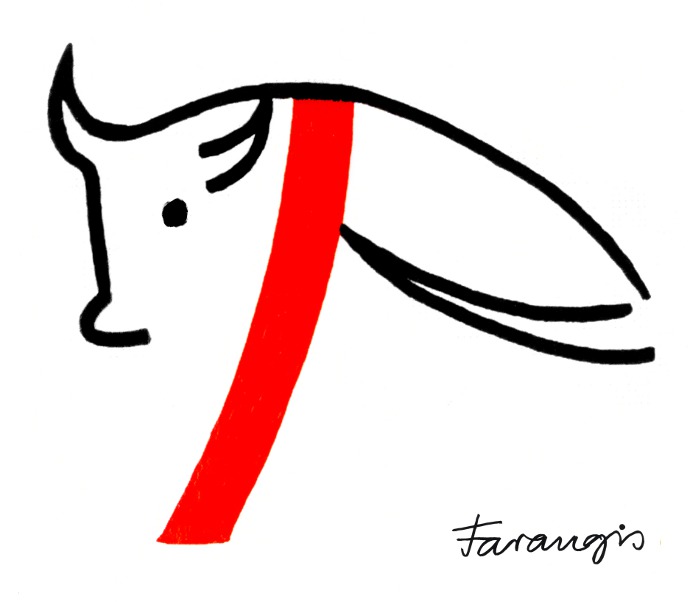stop press: 28 February 2012 – Slaughtering Chickens For “Art” Cancelled in Lawrence, Kansas! read more if you follow this link.
Killing nonhuman animals as “art”. Yet another patho… case doing just that. No comment, yet again it speaks for its own state of pathology.
Amber Hansen is to be found at: http://vimeo.com/user5118234 and http://www.amberhansen.com/home.html, who she is? Just read this:
STEVEN F. EISENMAN
Professor of Art History
Northwestern University
The following is the email letter I sent to the Spencer director, curator of modern art, and curator of contemporary art:
Dear Dr. Hardy,
I read with interest that your museum is planning an exhibition called, “The Story of Chickens: A Revolution.” As a scholar of modern art, and historian of the image of animals in art (the subject of my forthcoming book), I must tell you that there is nothing “revolutionary” about your exhibition or its subject.
The depiction in words and images of the killing or exploitation of animals for the purpose of encouraging kindness extends back more than two hundred years. Such works — and John Lawrence’s profusely illustrated treatises circa 1800 come to mind — always supported the most conventional of beliefs: that humans are the crown of creation (the pinnacle of the “Great Chain of Being”) and possess the God-given right to own, exploit and kill any animal, so long as the slaughter is done humanely. This line of reasoning — sometimes called “welfarist” — has sanctioned the killing of billions upon billions of animals every year, usually in the cruelest manner imaginable.
What is avant-garde, even “revolutionary” today — because it refutes the cruel, old stereotypes — is the view that animals are sentient creatures who possess a right to life and autonomy. This perspective is embraced by many scientists, (such as the pioneering ethologist Donald Griffin) philosophers (such as Bruno Latour) artists, (including Sue Coe), and writers (for example J.M. Coetzee).
In the interests of a progressive museology and simple humanity, I ask you to cancel the planned exhibition, “The Story of Chickens” and to renounce any killing of animals for the sake of art-making.
With respect,
Stephen F. Eisenman
Professor of Art History
Northwestern University
(Curator, “Gauguin: Artist of Myth and Dreams,” “The Ecology of Impressionism,” “Design in the Age of Darwin,” etc.)
———————–
ELIZABETH SCHULTZ
Former faculty member of the University of Lawrence
Member of the Board of Directors of the Spencer Museum of Art
To: Spencer Museum of Art:
Last night I received the following news regarding an upcoming event at the Spencer, and I must say that it causes me deep concern. Although I recognize the SMA’s desire to engage our community in provocative and meaningful discussions (and I must assume that this is the visiting artist’s intention as well), I am nonetheless distressed by the Spencer’s decision to endorse and encourage a project which sponsors the actual (not figurative) deaths of five animals.
It is disturbing to me that the Spencer would be associated with the slaughter of these animals, especially after they had been well and even lovingly cared for within the museum for a month. Certainly, the project forces viewers and participants to consider the inhumane treatment of millions of animals in slaughterhouses throughout the US and the world and the disjuncture that is made between the living animal and the consumption of meat. I question, however, whether the Spencer needs to enact the final part–the chickens’ slaughter–of Amber Hansen’s project in order to make these points. I feel strongly that the entire project demonstrates human power over and control of animals (the androcentric position, perspective), which is crucial for us to acknowledge, but that its culmination in their planned deaths and a gourmet meal is cynical and fascistic. Although the deaths would occur off site (away from the museum), I feel that the museum would be tainted, blood-splattered forever.
I very much hope that the Spencer’s program planners will 1) consider alternative ways of asking questions about the complexity of humans’ relationships with animals in general and about the implications of the corporate meat industry in particular and 2) eliminate this particular project from its spring programming. I certainly will be glad to discuss this with you in person. Elizabeth Schultz
———————
SAVANNA SCARBOROUGH
To: Spencer Museum of Art:
This project would be more aptly named, “The Story of Chickens: A Betrayal.” The description of Hansen’s proposed ‘art installation’ is a sanctimonious crock, exceeded only by her alarming lack of consciousness and clarity of intention within the project itself. If volunteers and community members became true guardians of these birds, and came to see and care for them as the sentient individuals they are, they would not in good faith then turn on their friends, watch their murder, and shamelessly eat them the next day. I would personally view that as a form of cannibalism. Children are naturally keyed in to the natural world, sensitive to their true connection with non-human animals; they haven’t yet been desensitized by society to put on their blinders and to accept the false proposition that certain animals are our food and other animals, our companions. They also get the inherent betrayal of trust when animals they’ve cared for and raised are then slaughtered.
If Hansen were to present an ‘art project’ that would begin to challenge the hypocritical bias of the kinds of megalomaniacal assumptions about food animals corporatocracy promotes, it might merit approval as a kind of revolution, though I wouldn’t be so unctuous as to call it art; leave that to great artists! I fervently ask that Spencer Art Museum withdraw its support of Ms. Hansen’s ill-conceived project, because not only is it not art, it contradicts and turns into a sham the deeper, more truthful meaning of her statement: “Interacting with animals allows us a more complete understanding of humanity; it reminds us of our relationship with the natural world, and our responsibility in caring for it.” Savanna Scarborough
source of infos: http://www.upc-online.org/entertainment/120208chicken_slaughter_art.html
